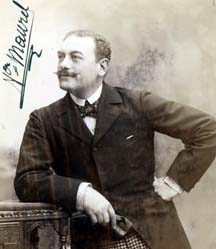|
Leoncavallo
Ruggero (or Ruggiero) Leoncavallo ( , , ; 23 April 18579 August 1919) was an Italian opera composer and librettist. Although he produced numerous operas and other songs throughout his career it is his opera ''Pagliacci'' (1892) that remained his lasting contribution, despite attempts to escape the shadow of his greatest success. Today he remains largely known for ''Pagliacci'', one of the most popular and frequently performed works in the opera repertory. His other compositions include the song " Mattinata", popularized by Enrico Caruso, and the symphonic poem ''La Nuit de mai''. Biography The son of Vincenzo Leoncavallo, a police magistrate and judge, Leoncavallo was born in Naples on 23 April 1857. As a child, Leoncavallo moved with his father to the town of Montalto Uffugo in Calabria, where he lived during his adolescence. He later returned to Naples and was educated at the city's San Pietro a Majella Conservatory and later the University of Bologna studying literatur ... [...More Info...] [...Related Items...] OR: [Wikipedia] [Google] [Baidu] |
Pagliacci
''Pagliacci'' (; literal translation, "Clowns") is an Italian opera in a prologue and two acts, with music and libretto by Ruggero Leoncavallo. The opera tells the tale of Canio, actor and leader of a commedia dell'arte theatrical company, who murders his wife Nedda and her lover Silvio on stage during a performance. ''Pagliacci'' premiered at the Teatro Dal Verme in Milan on 21 May 1892, conducted by Arturo Toscanini, with Adelina Stehle as Nedda, Fiorello Giraud as Canio, Victor Maurel as Tonio, and Mario Ancona as Silvio. Soon after its Italian premiere, the opera played in London (with Nellie Melba as Nedda) and in New York (on 15 June 1893, with Agostino Montegriffo as Canio). ''Pagliacci'' is the composer's only opera that is still widely performed. ''Pagliacci'' is often staged with '' Cavalleria rusticana'' by Pietro Mascagni, a double bill known colloquially as "Cav and Pag". Origin and disputes Leoncavallo was a little-known composer when Pietro Mascagni's '' Cav ... [...More Info...] [...Related Items...] OR: [Wikipedia] [Google] [Baidu] |
